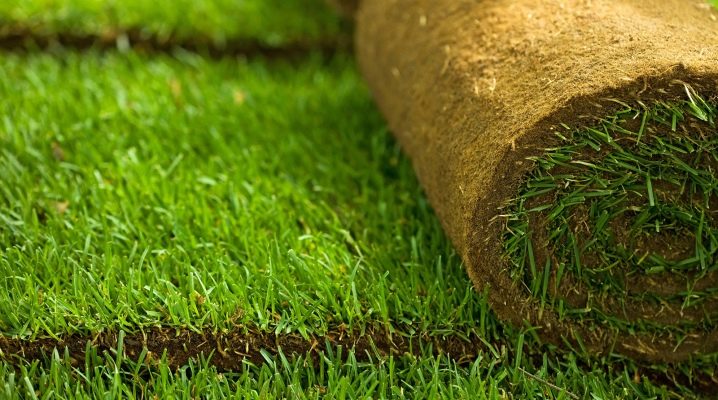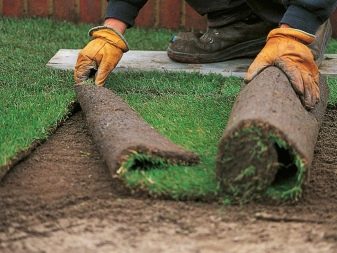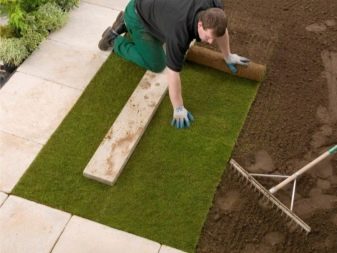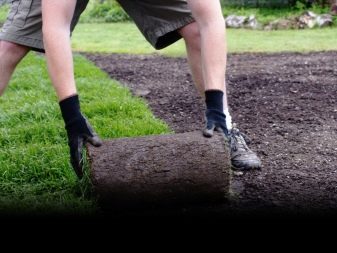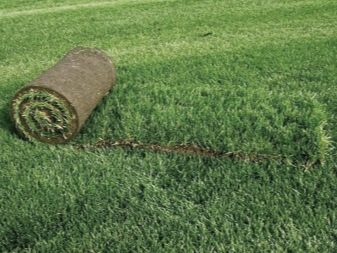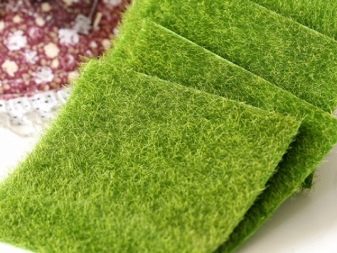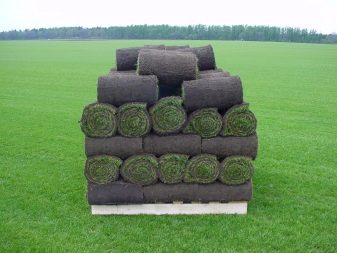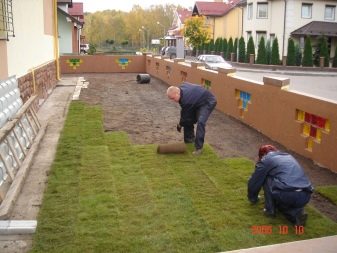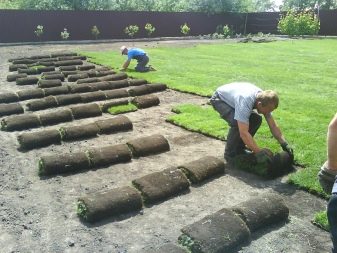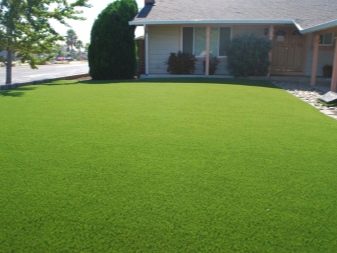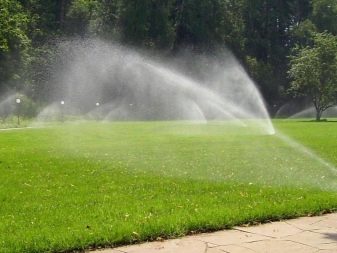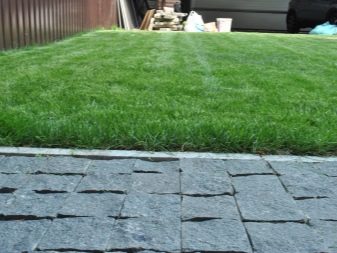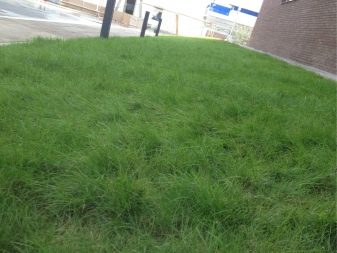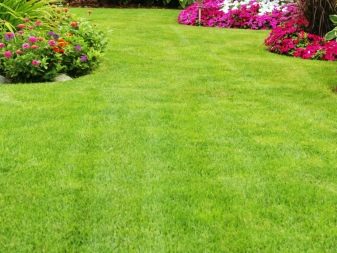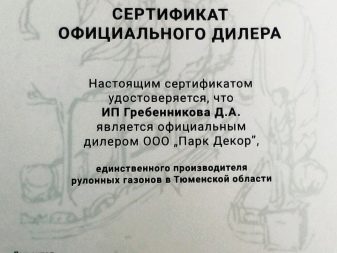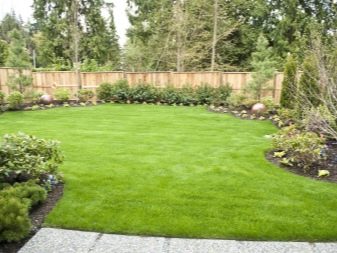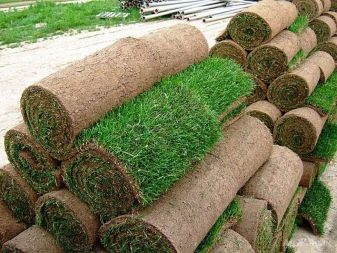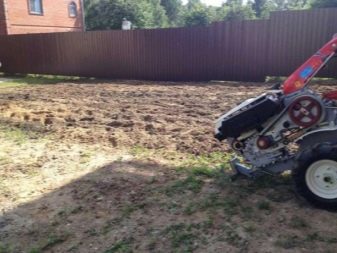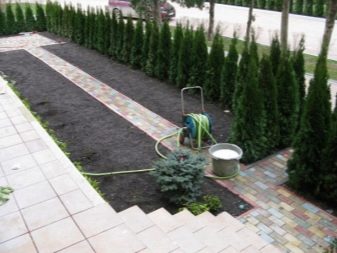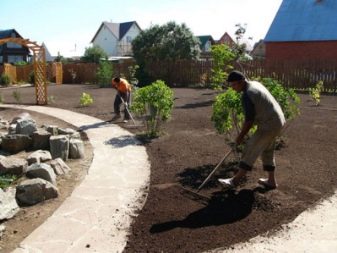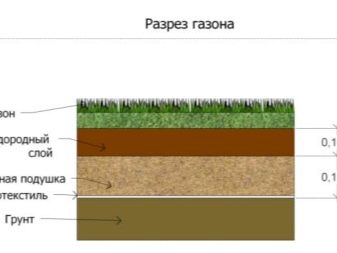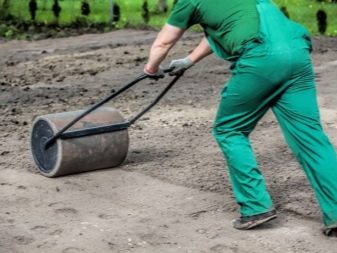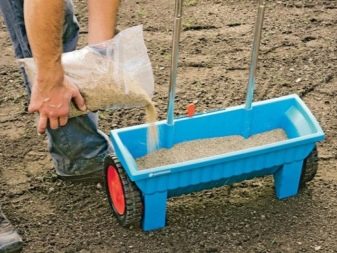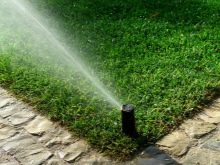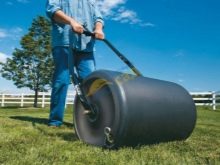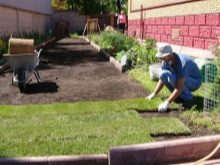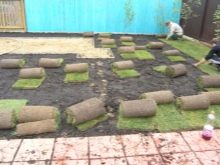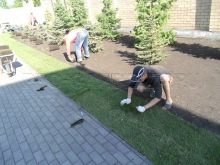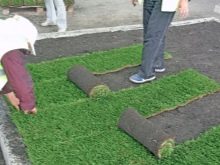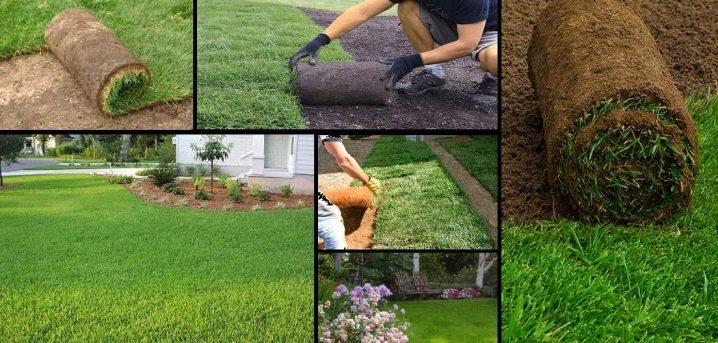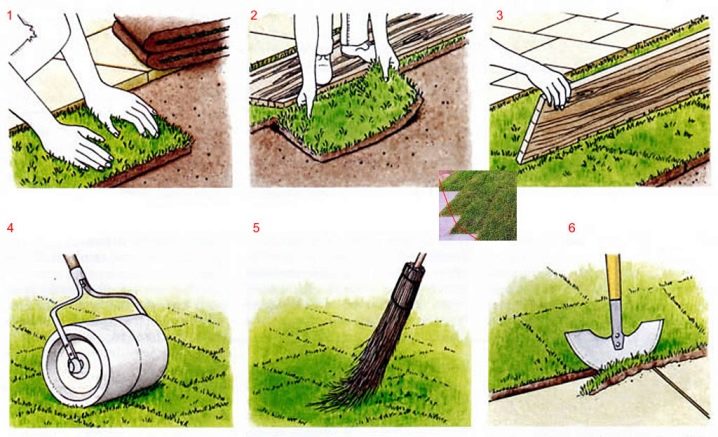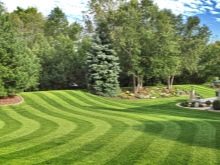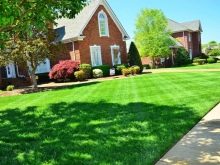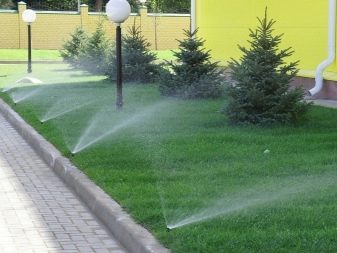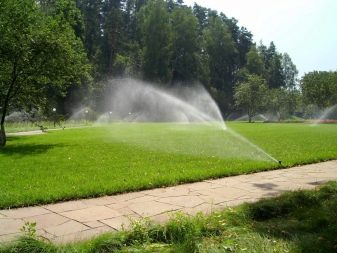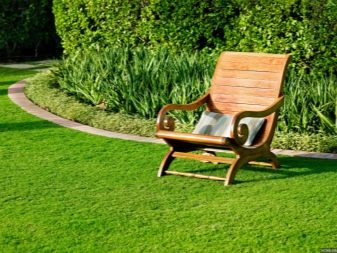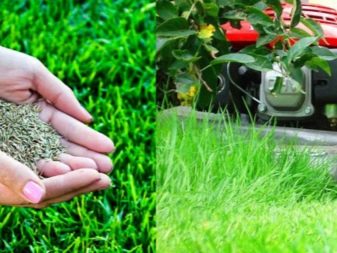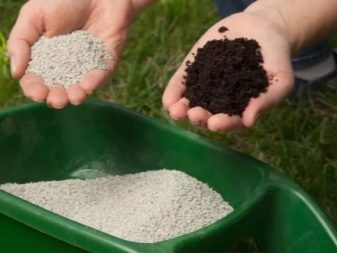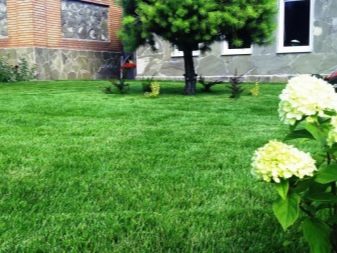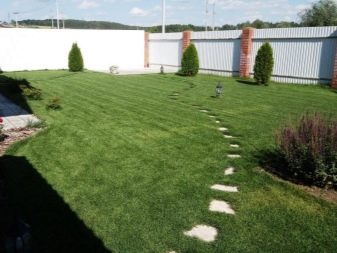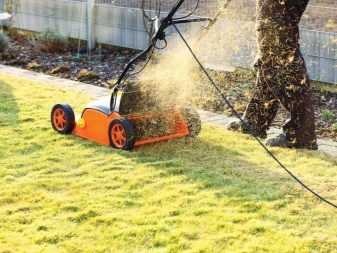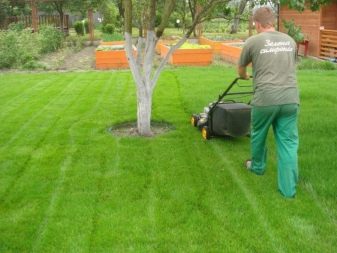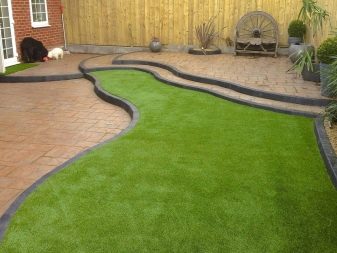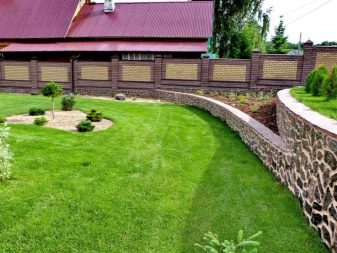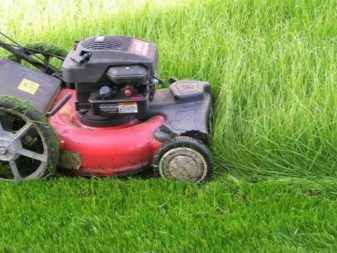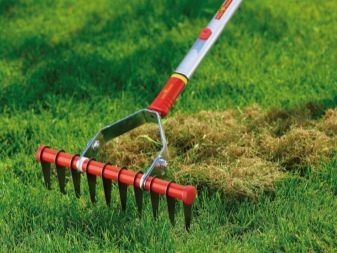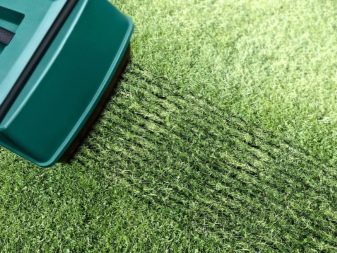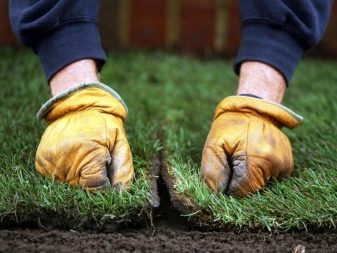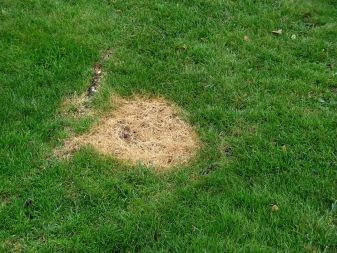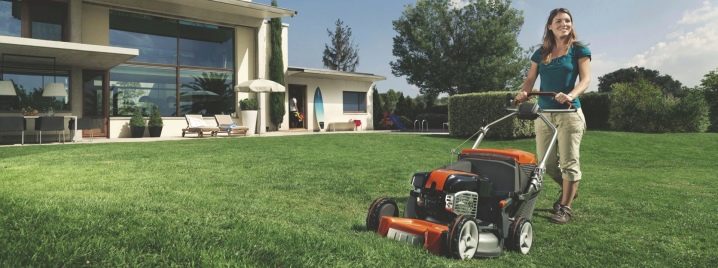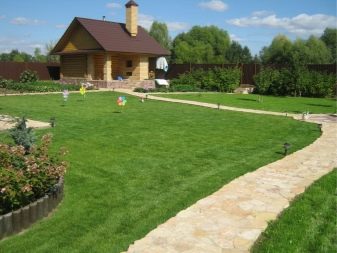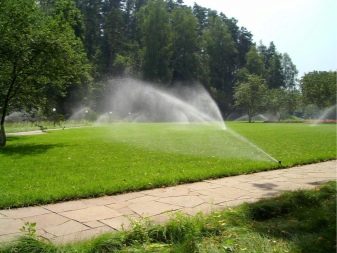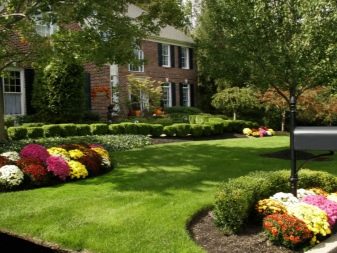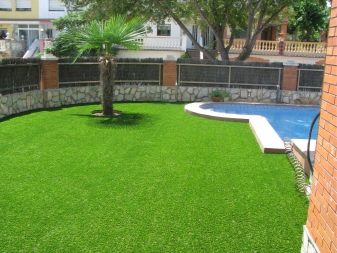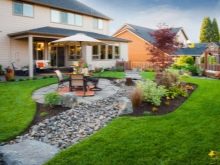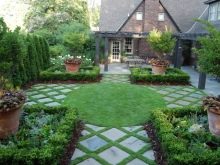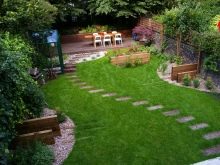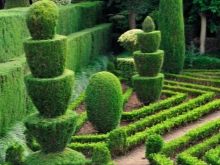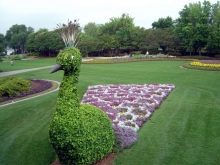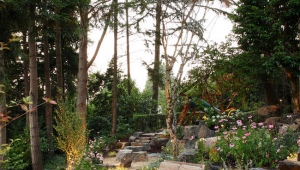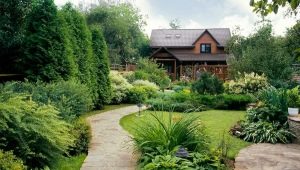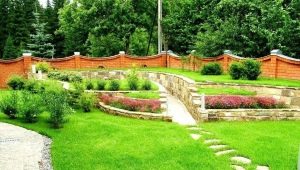Laying turf: material features and laying technology
Modern technologies offer a variety of ways to quickly resolve issues related to the arrangement of a section of a country house. One of them is the use of turf. It is easy to spread, it is not difficult to care for him. As a result, the territory is transformed in a short time, acquiring a stylish look.
Special features
The main feature of the turf is that it is a living grass that you can buy and lay on your site. Grass growing and making rolls from it are done by professionals. Transported material in rolls. The device of a rolled lawn on a site takes a little time.
There are two types of lawn on the product market today: on the substrate and without it. Rolled lawn on a substrate has an artificial basis between the layers of stems and roots.Most often, this is a special fiber mesh, which before sowing the seeds is covered with the soil of the plot. Growing, the roots of herbs tightly intertwine with the base and form a durable canvas. The second type of lawn does not involve the use of any basis.
The root system of plants is so tightly woven together that the grass cover is easily cut and tolerates transportation.
Grown in one way or another, the canvas is cut into strips, rolled into rolls and transported to the landing site.
The standard strip of lawn has a size of 2 by 0.4 meters, its area is 0.8 square meters. m There are other options for cutting.
In order for the lawn to enjoy its appearance for many years, it is necessary to initially choose high-quality material. When buying a bay with grass rolled out and carefully considered. Experts do not advise making a purchase in cases where:
- weeds grow with ornamental herbs;
- on the canvas there are places without grass;
- lawn has an uneven thickness;
- grass has a poorly developed root system;
- there are many gaps between the roots.
Each a roll of quality lawn has a certificate indicating the location of the nurserywhere it was grown and manufactured. This information helps to get an idea of the ecological state of the grass in a roll.
The required number of rolls is calculated by the land area. They buy grass with a small margin, as during laying there may be various unforeseen situations. Remains of grass are planted separately and, if necessary, used to repair the main blade.
To calculate the number of rolls, do the following:
- Measure the length and width of the plot on which you plan to plant a lawn;
- The obtained measurements multiply and obtain the area of the future lawn in square meters;
- In the case of a rectangular area, an additional 5% is added to the resulting number. If the plot is irregular, add at least 10%;
- The area of the site (increased by 5-10%) is divided by the area of one roll;
- The result of the division is rounded up. The resulting number and show how many rolls of lawn will be required for planting in this area.
Site preparation
Land under the lawn must be prepared a few days before planting. The preparation is as follows:
- Location selection. For the device lawn choose the territory with a depth ofgroundwater over 50 centimeters. Lawn grass like the sun, so for the lawn choose the sunniest place in the yard.
- Cleaning the site from garbage. From the area of the site is removed everything, including the remains of plants. If there are irregularities on the surface of the earth, they are flattened out, filling up the pits and cutting off the bumps. The site should have a clean and flat surface.
- Soil cultivation. The soil is cultivated or simply dug over. At the same time weeds are destroyed. The remnants of rhizomes clean.
- Creating a drainage layer. If the soil is clayey and is able to retain moisture for a long time, a drainage layer is made. To do this, remove part of the soil and pour a layer of a mixture of sand and gravel. From above the layer of fertile soil is poured.
- Preparation of the fertile layer. It must be at least 15 centimeters thick. If necessary, pour it. Surface level. To make the future lawn look naturally and fit well into the design of the site, the level of the prepared area is made a few centimeters below the surrounding area.
- Soil compaction. The prepared surface is compacted. Do it only in dry weather.For soil tamping use heavy hand roller or improvised means. Soil compacted so that it did not remain traces of shoes. It is not recommended to walk on the rammed area.
- Fertilization. 7 days before laying in the soil make a complex of fertilizers. If the lawn is laid in the spring, then use nitrogenous components. In the fall, potassium and phosphorus are introduced.
How to plant?
The technology of planting a turf is quite simple and can be done by hand. Laying the lawn is carried out in three stages.
Sequencing:
- Lay the strip on the prepared surface;
- To roll a lawn;
- Pour over water.
Performing installation yourself, it is important to follow the basic rules:
- Laying the lawn start from the curb or fence.
- The bands are strictly butt-seated, tightly pressed to each other. Gaps between the layers, as well as overlaps, should not be.
- The first row spread out in strips of lawn, trying to put them as even as possible.
- The second row begins not with a whole band, but with a half. To do this, a strip with a shovel or knife must be cut in half and lay one part of it.Next, use the whole strip, and the remaining part of the first strip closes the row.
- The third row and all subsequent odd rows are laid as the first row.
- The fourth and all subsequent even rows are laid as the second row. As a result, the strips will be laid in a staggered manner, which subsequently will allow to hide the seams between them.
- Pieces of lawn are laid closer to the center, while at the edges only solid stripes are used.
- If there are obstacles, for example, the edge of a flower bed or garden path, the roll continues to roll in a straight line, and then with a sharp knife cut the grass along the contour of the obstacle.
- Having laid a strip, check the tightness of the layer to the soil. This can be done by running your hand over the surface. When irregularities are detected, the strip is raised and the cause is eliminated.
- When the whole lawn is laid, it rolls. For rolling use a special garden roller. It is performed for a more snug fit of the grass root system to the ground and in order to remove the air cavities that are formed during the laying process. Repeat the procedure again on the third day after laying.
- Laid lawn immediately begin to water abundantly.
- During the first 3-4 weeks do not walk on the lawn, as the grass during this period is subject to the formation of dents.
Care Tips
To lawn pleased others with their appearance, you need to properly care for the lawn. Especially carefully monitor the lawn in the first year after planting.
Caring for grass covers includes such activities as:
- Watering;
- Dressing;
- Mowing;
- Carding with a rake;
- Aeration;
- Repairs.
Water is the main thing, without which no plant will survive, and the turf is no exception. In the hot summer for seven days the lawn loses about 25 liters of life-giving moisture. Detected at a depth of ten centimeters under the flooring dry soil should be an alarm bell - soon the grassy coating will begin to lose elasticity, it will become dull and unattractive.
It is necessary to ensure that the soil under the lawn is constantly moistened at least 10-15 centimeters in depth.. Otherwise, the grass that makes up the lawn, over time will begin to wither, turn yellow and eventually die. Watering hoses must be provided with tips with sprinklers. This will prevent dilution of fertile soil and will not damage the roots of plants.
It should not be watering the lawn in the midday heat, because from a sharp temperature drop the plants may die. Water temperature should not be below 14-15 degrees..
Watering a new lawn is carried out during the first two weeks every day, carefully making sure that the soil does not dry out under the lawn. Further frequency of watering depends on weather conditions. In dry weather, it is necessary to water every 2 days, in a cool time, water at least 1 time in 10 days.
Fertilizing is a very important part of lawn care. It is carried out twice a year - in spring and autumn. Fertilizers are used the same as for ordinary plants: potassium, phosphorus, nitrogen, mixtures of trace elements.
Nitrogen accelerates the growth of grass mass, activates the formation of germs. Phosphorus has a positive effect on the root system, enhances its development. Potassium affects the rate of water and nutrient supply to parts of a plant, especially its root system, increases the resistance of roots to low temperatures.
In the spring, fertilizers are applied even before the snow cover disappears. Autumn dressing is done to better prepare the root system of plants for wintering.In the fall, mineral fertilizer complexes containing phosphorus and potassium are used.
In no case in the fall can not apply fertilizers containing nitrogen. This is due to the fact that nitrogenous compounds cause the rapid development of vegetation, and in the fall it is useless, as the young grass quickly dies from frost.
Mowing or mowing lawn grass is done in order to give the lawn a neat look. The first time they mow the lawn about a month after laying. The trimmer of the lawn mower must be adjusted so that only the uppermost parts of the plants, no more than 1-2 centimeters, go under the cut.
In the future, the lawn is sheared at a height of 6-7 centimeters, and in order to accelerate the growth of cover and at 4 centimeters. Cut grass is removed.
The first spring haircut is done sparingly - as at the initial stage, only the tops of the plants are cut off. Last autumn cut done before the first frost.. At the last haircut, ensure that the stems of the grass remained at least 5 centimeters high. This will allow the grass to winter well.
To remove garbage from the territory of the lawn, as well as mowed parts of plants, it is combed with a garden rake.Scouring the lawn is done in the spring and after each mowing the grass. In the spring, the lawn is being combed after all the snow has melted. At the same time, trash accumulated during the winter, remains of old grass and excessive moisture are removed from the surface. If necessary, additional drainage of turf is slightly raised with the help of garden forks every 25-30 cm.
The lawn is treated by swiping a rake several times in different directions: along, across, diagonally. In this case, strongly press the rake is not recommended, so as not to damage the root system of plants.
Regular carding promotes improved grass growth, protection from the spread on the lawn weeds, the seeds of which can be brought by wind or birds. After the first shearing, the grass is not combed, as it needs to be allowed to take root.
The dense root system of a lawn for good growth and development needs additional intake of air. For this systematically aerate. Aeration is air saturation, in other words, airing.
This process has a very simple technology. On the surface of the lawn and the top layer of soil make small holes with special devices, often homemade. That is, the surface is simply pierced.As a result, the soil under the root system is enriched with oxygen, and the lawn takes on a healthier appearance.
In the autumn, aeration must be done when preparing the lawn for the winter. The autumn piercing of the crust allows the water that has accumulated after the autumn rains to be removed and the root system to be protected from freezing.
Repair of the lawn is carried out as needed during spring harvesting and in autumn when preparing the lawn for wintering. First, the lawn is combed with a rake. If bald spots or areas with a thinner cover were found on it, then it is necessary to loosen the soil in these areas, mix the seeds with the ground and sow the area. Be sure to seal the surface and pour abundantly.
For lawn repair, you can also use the remaining parts of the lawn that were planted elsewhere during planting. Bands of the required size are neatly cut out and covered with them not overwintered areas.
In order for the lawn cover to stick well and throughout the summer it pleased the owners with their well-groomed look, you should try to avoid the most frequent mistakes in care:
- Do not cut the grass at the beginning of the season. A young lawn needs to be cut, since after mowing the grass becomes thicker and more resistant to weather conditions.
- Grass cover is cut too short.The height of the stems 1-2 centimeters is detrimental to the roots! Plants will be deficient in nutrients and moisture. And some herbs do not tolerate such an aggressive haircut and die.
- Grass cover mowed too high. The optimal height of the grass after mowing is from 3 to 5 centimeters. In higher grass, the stems become bare and the lawn loses its attractiveness and softness.
- Not kept haircut mode. Mow the grass regularly, about every two weeks.
- Wrong watering. In order for a lawn to look good, it does not need to be watered abundantly every day. It only hurts the coating. It is enough to moisten the coating several times a week using the sprinkling mode, and once a week to water the grass thoroughly, so that the soil under the lawn is soaked with water. Daily moistening is useful only in the first month after planting. It does more harm than good to adult grass - the roots develop poorly, the grass quickly loses its leaves and dries out.
Spectacular examples
Modern lawn in the country or in the courtyard of a country house can act not only as a separate functional recreation area, but also serve as a link for all areas of the site.Use of rolled lawns allows to realize any ideas of landscaping in a short time.
Often at the site of the lawn have in combination with garden paths. If in addition to plant flowers between them, the whole composition can become a real decoration of the yard.
Leaving grass clippings of different heights and skillfully combining them with each other, you can get wonderful compositions based on a combination of different geometric shapes, right down to circles and spirals.
It looks interesting combination of grass and stone on the lawn. At the same time they use both natural and artificial stones.
Stone ornament can be laid out along the curb along the walkway or directly along the lawn, forming beautifully curved walking paths. The cobblestones used for this purpose are placed in the turf for fixation purposes.
The combination of squared rolled lawn and paving slabs of the same size laid in a checkerboard pattern looks beautiful and very stylish.
The lawn decorated with figured trimmed decorative bushes effectively looks. Ideally, an evergreen boxwood is used for this.Its small leaf cover keeps its shape well with topiary, allowing you to get interesting decor elements - from simple tapes to complex plot compositions. But boxwood shrubs are heat-loving and do not take root in the northern regions.
A cotoneaster, which is not at all inferior to it in decorative properties, can be an excellent alternative to boxwood.
Another way to decorate a lawn is to combine a lawn with decorative elements. To create a composition using stones, decorative fountains, garden sculptures.
For details on the design and installation of turf, see the following video.
